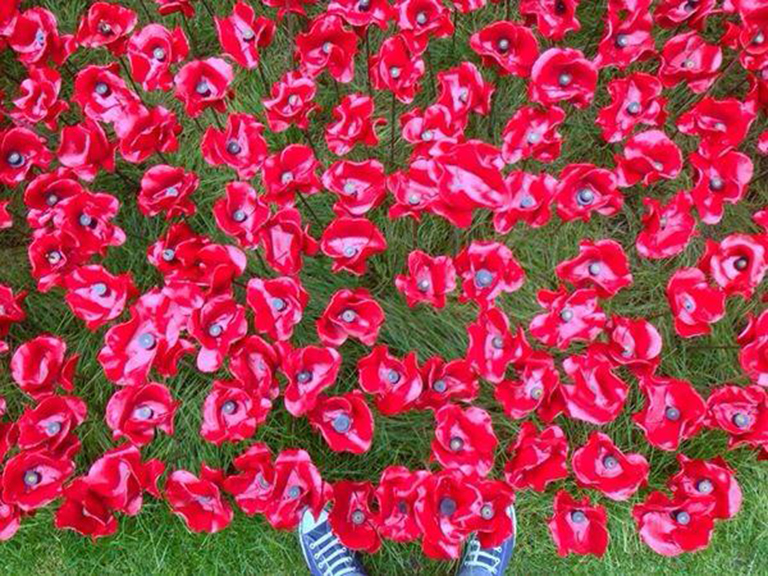
Today the number of poppies in the Seas of Red installation will reach its peak. Each one represents a military life lost by Britain and her colonies in World War One.
One of our art directors, David Donaghy, was part of a team that volunteered to help ‘plant’ some of the 888,246 flowers: “I wanted to be involved because I have an avid interest in World War One history, and as a designer I was fascinated by how the poppies were made.
“No two flowers are the same. They are handmade and their natural folding makes each one different. You only really see that when you are laying them out. I became so wrapped up in the task of planting the flowers it wasn’t until I took a step back that I appreciated each poppy is unique, like each life lost.”
To achieve this, ceramic artist Paul Cummins used old-fashioned techniques. Nothing was automated and any machinery involved was hand-powered: Cummins believes the act of physically making something helps it to mean something.
By now more words must have been written about the poppies than the number planted. And that is extraordinary. Cummins has shown how great design can connect a distant generation to the horrors of a century-old war.
Beyond the reminder of tragic sacrifice, for anyone who works in the creative world, the power of his poppies is hugely cheering. By capturing the nation’s imagination on a grand scale he proves the value and power of great design.
This is important in 2014, when the role of creative professions can be downplayed by organisations – viewed just as a commodity like so much photocopy paper, or something to be outsourced to a more cost-effective service centre in a far-flung country.
So thank you, Paul Cummins, for reminding us not only of the horrors of war but in so doing the potency of great creative thinking.
Watch the making of: http://poppies.hrp.org.uk/about-the-installation/#section—video
Stay ahead of the curve
Sign up to our emails